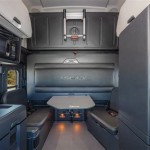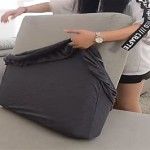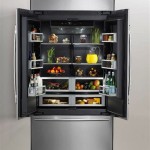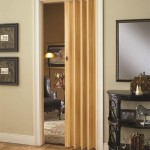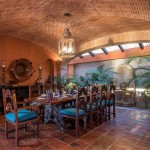Interior Pocket Doors: A Comprehensive Guide
Interior pocket doors represent a unique solution for maximizing space and creating a seamless aesthetic within a home. Unlike traditional hinged doors which require swing space, pocket doors slide horizontally into a recess within the wall, effectively disappearing when open. This makes them particularly advantageous in areas where space is limited or where an open, flowing layout is desired.
The history of pocket doors can be traced back to the 18th century. Originally crafted for grand estates and opulent residences, their purpose was to discreetly divide large rooms, offering flexibility in spatial configuration. Over time, technological advancements in hardware and construction methods have made pocket doors more accessible and adaptable, leading to their increased popularity in modern homes for both practical and stylistic reasons.
Understanding the components, installation process, benefits, and limitations of interior pocket doors is crucial for anyone considering incorporating them into their home design. This article provides a comprehensive overview of interior pocket doors, offering insights into their various aspects.
Optimizing Space with Pocket Doors
The most significant benefit of interior pocket doors is their space-saving capability. In tight spaces like bathrooms, hallways, closets, or pantries, the elimination of a door's swing arc can make a considerable difference. A standard hinged door can occupy up to 10 square feet of floor space when opened. By eliminating this swing, pocket doors free up that space for other uses, such as adding a larger vanity in a bathroom, expanding storage in a closet, or improving maneuverability in a narrow hallway.
Consider, for example, a small en-suite bathroom. A traditional hinged door, when open, can obstruct access to the toilet or vanity. A pocket door allows for full and unobstructed access to all fixtures, making the room feel larger and more functional. Similarly, in a pantry, a pocket door prevents the open door from blocking access to shelves or interfering with movement around the space.
Beyond individual rooms, pocket doors can also enhance the overall flow of a home. By creating a seamless transition between rooms, they facilitate an open concept design while still allowing for privacy or separation when needed. This is particularly useful in areas like living rooms and dining rooms, where the spaces can be combined for entertaining or separated for more intimate settings.
The space-saving advantage of pocket doors extends beyond just the physical footprint. It also affects the psychological perception of space. A room with a pocket door often feels larger and more airy than a room with a hinged door. This is because the absence of the visible door swing creates a more streamlined and uncluttered aesthetic.
Understanding the Construction and Installation Process
The construction of an interior pocket door involves several key components: the door itself, the track system, rollers, jambs, and trim. The door is typically made of wood, MDF (Medium-Density Fiberboard), or a combination of materials. The track system, which is mounted horizontally in the wall, supports the weight of the door and allows it to slide smoothly. Rollers, attached to the top of the door, glide along the track. Jambs form the vertical sides of the door opening, providing structural support and creating a finished appearance. Trim is used to conceal the edges of the pocket and provide a decorative frame around the door opening.
The installation process for a pocket door is more complex than that of a standard hinged door, often requiring modifications to the wall framing. To create the pocket, a section of the wall must be opened up and rebuilt with a split stud design, where the studs are divided to accommodate the door's width. This requires careful planning and execution to ensure structural integrity of the wall.
The track system is installed within the pocket, and the rollers are attached to the door. The door is then carefully positioned on the track, and the movement is tested for smoothness and alignment. Finally, the jambs and trim are installed to complete the installation. Because the installation involves working within the wall structure, it's important to consider any existing plumbing or electrical wiring that might be present. Relocating these utilities can add to the complexity and cost of the project.
While it is possible for a skilled DIY enthusiast to install a pocket door, it is generally recommended to hire a professional contractor. A professional installer will have the experience and expertise to ensure that the door is installed correctly, smoothly, and safely, minimizing the risk of future problems such as sticking, misalignment, or structural issues.
The cost of installing a pocket door is typically higher than that of a hinged door, due to the added complexity of the installation process and the specialized hardware required. However, the long-term benefits of space savings and aesthetic appeal often outweigh the initial cost.
Evaluating Pocket Door Advantages and Disadvantages
Interior pocket doors offer several advantages over traditional hinged doors, most notably their space-saving capabilities. As mentioned previously, they free up valuable floor space, which is especially beneficial in small rooms or areas with limited maneuverability. They also contribute to a cleaner, more modern aesthetic by eliminating the visible door swing and creating a seamless transition between rooms.
Furthermore, pocket doors can be integrated with various design styles, from traditional to contemporary. They can be crafted from a wide range of materials, including wood, glass, and metal, and can be customized with different finishes and hardware to complement the overall decor of the home. The ability to completely conceal the door when open allows for maximum flexibility in room configuration and usage.
However, pocket doors also have some disadvantages that should be considered. One potential drawback is the issue of soundproofing. Due to the gap between the door and the jamb, pocket doors typically do not provide as much sound insulation as hinged doors. This can be a concern in areas where privacy is essential, such as bedrooms or home offices.
Another common issue is maintenance. The track system and rollers can occasionally require cleaning and lubrication to ensure smooth operation. If dirt or debris accumulates in the track, the door may become difficult to slide or may even get stuck. Accessing the track for maintenance can be challenging, as it is located inside the wall. Over time, the door may also become misaligned, requiring adjustment of the rollers or track.
Pocket doors may also pose challenges in terms of hardware options. Because the door slides into the wall, traditional door knobs or levers cannot be used. Instead, specialized flush-mounted pulls or latches are required. While these options are available in a variety of styles, they may not provide the same level of security or ease of use as traditional hardware.
Finally, the structural integrity of the wall can be a concern, especially in older homes. The creation of the pocket requires modifying the wall framing, which can potentially weaken the structure. It's crucial to ensure that the framing is properly reinforced during the installation process to prevent any future problems.
In summary, interior pocket doors are a practical and aesthetically pleasing option for maximizing space and creating a seamless flow in a home. However, it's important to carefully consider the advantages and disadvantages before making a decision. Weighing the benefits of space savings and modern design against the potential challenges of soundproofing, maintenance, and installation complexity will help determine if pocket doors are the right choice for a particular space.
Ultimately, the decision to install pocket doors depends on individual needs, preferences, and budget. By understanding the intricacies of their construction, installation, and performance, homeowners can make informed decisions that enhance both the functionality and beauty of their living spaces.

Calhome 30 In X 80 1 Panel Hollow Core White Primed Composite Mdf Interior Door Slab For Pocket Pk 1panel Lp The Home Depot

Pocket Door

Sliding French Double Pocket Doors Felicia 3355 Matte Black With Clear Glass Kit Trims Rail Hardware Solid Wood Interior Bedroom Sy Com

Rocket Pocket Door Frame Kits Sliding Frames

Pocket Doors Shaping The Future Of Home Interior Design

Calhome 36 In X 80 Black Stained Composite Mdf Hollow Core 2 Panel Round Top Interior Door Slab For Pocket Pk 2panel Rd 36d The Home Depot

6 Panel Colonial Double Converging Pocket Doors Rustica

2 Beautiful Interior Pocket Doors With 3 4 Glass 36 X 80 Heritage Design

Calhome 36 In X 80 Black Painted Composite Mdf Sliding Door With Pocket Frame And Hardware Kit Sc40 Panel Ml 36d The Home Depot

French Pocket Door With Frames Solid Wood Interior Sliding Closet Sy Doors Buy Bari Decor

